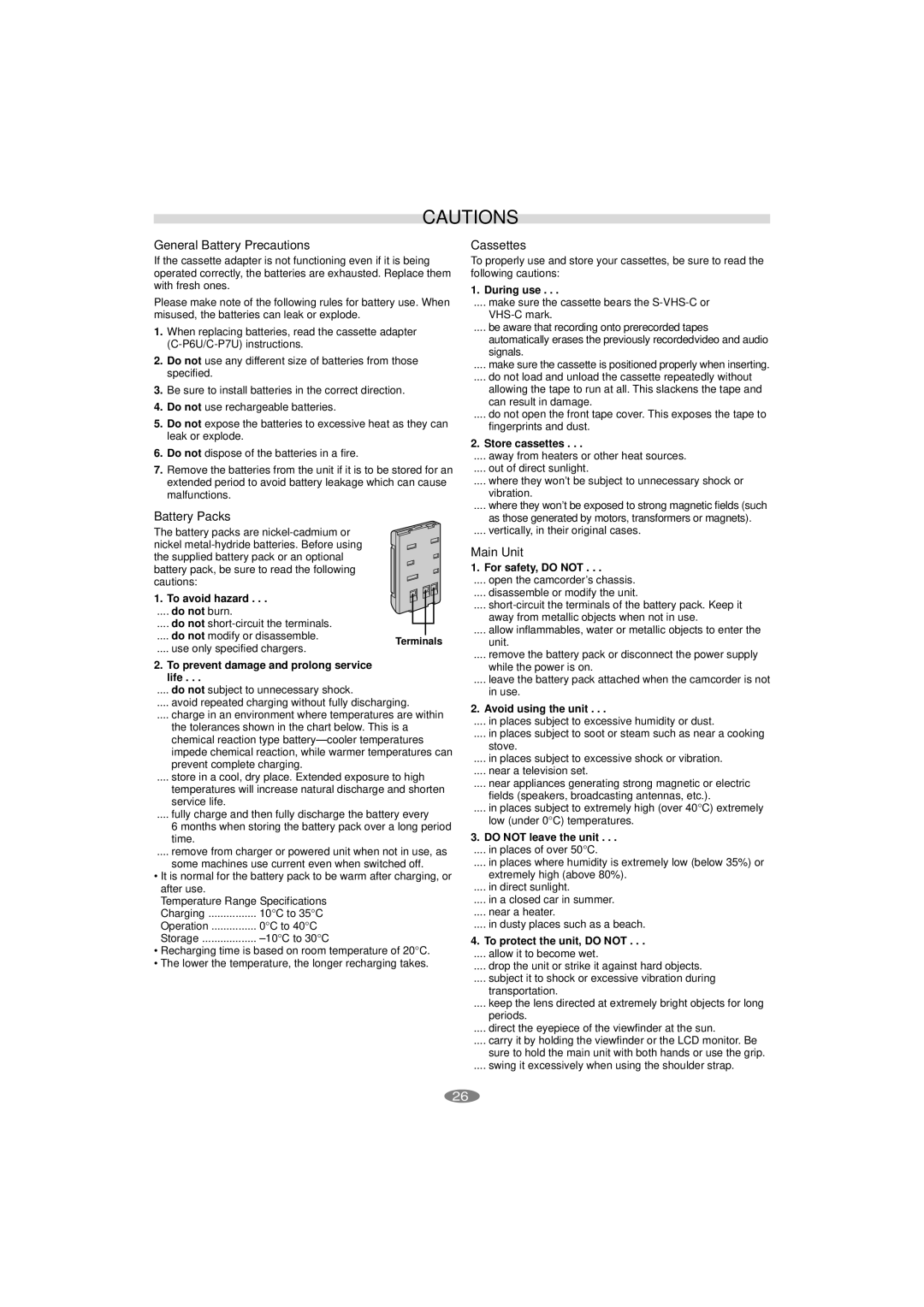GR-SXM195AS, LYT1133-001A specifications
The JVC LYT1133-001A, GR-SXM195AS is a remarkable piece of technology, demonstrating JVC's commitment to providing quality video recording and playback solutions. This device is designed to cater to both amateur filmmakers and experienced videographers, blending user-friendly features with advanced specifications.One of the standout features of the GR-SXM195AS is its high-performance video recording capabilities. It offers a vibrant and detailed image quality through its advanced CCD imaging sensor, which captures video at a high resolution. This results in clear, crisp footage that is essential for both personal projects and professional use. The device supports various video formats, making it versatile for different types of editing workflows.
The GR-SXM195AS also comes equipped with a powerful optical zoom lens, allowing users to get close-up shots without sacrificing image quality. This feature is particularly beneficial for wildlife videography or any scenario where capturing detailed subjects from a distance is necessary. The lens boasts a fast aperture, contributing to superior performance in low light conditions, thus expanding the range of environments in which the camera can be effectively used.
In terms of usability, the JVC LYT1133-001A is designed with an intuitive interface that ensures ease of operation. It features a user-friendly menu system and physical controls that are easily accessible, ideal for quick adjustments while recording. The device is lightweight and portable, which makes it a convenient companion for on-the-go shooting.
Another key characteristic includes its advanced stabilization technology, which helps in reducing camera shake and ensuring smoother footage. This is particularly beneficial during handheld shooting, as it allows for more dynamic shots without the distraction of unstable video quality.
For connectivity, the GR-SXM195AS offers various options such as HDMI and USB ports, enabling seamless integration with other devices for sharing, editing, or storing footage. This enhances the overall user experience, providing flexibility in how content is managed post-shooting.
In conclusion, the JVC LYT1133-001A, GR-SXM195AS stands out in the market for its blend of high-quality imaging, user-friendly design, and advanced technology. Whether for personal use, vlogging, or professional projects, this device is equipped to meet the demands of modern videography. Its features combined with JVC's renowned reliability make it a valuable tool for anyone looking to create exceptional video content.

